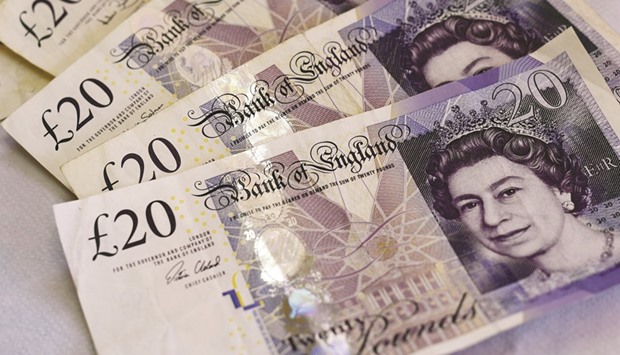Two of Scotland’s biggest fund management firms have a message for the currency market: it’s time to give the pound a break.
Sterling’s 16% slide since the UK voted to leave the European Union on June 23 reflects a changed economic reality, according to Standard Life Investments and Kames Capital.
That means there’s little reason to aggressively sell – or buy – the currency until the details of the UK’s new relationship with the EU and the economic implications have unfolded.
“This is a long, slow train lasting a decade,” Andrew Milligan, head of global strategy at Standard Life, which manages about £270bn ($335bn), said in an interview at Bloomberg’s Edinburgh office this week. “Markets have priced in the fact that the UK economy is going to go through a big structural adjustment - sterling shows us that.”
After plunging to the lowest against the dollar since 1985, the year of an international agreement to devalue the American currency, the pound has recovered some equilibrium and traded between $1.21 and $1.27 over the past month. Initial losses were capped as the depreciation boosted exports and the Bank of England’s monetary stimulus supported the economy more than policy makers had predicted.
The pound was the “whipping boy” of foreign exchange markets in the aftermath of the referendum, said Stephen Jones, chief investment officer at Kames. Also based in the Scottish capital, the firm oversees about 51bn pounds for clients.
“I’m slightly more optimistic on it now,” Jones said in an interview alongside Milligan. “We are not short sterling, but it’s not an endorsement of buying it. Whilst we can take comfort from the beginnings of reference to policy, the detail is non- existent.”
The government hasn’t yet triggered the two-year legal process to leave the EU. While the Supreme Court will decide whether it needs a parliamentary vote, Prime Minister Theresa May reiterated her plan to do it by the end of March. Only then will Britain start unravelling more than four decades of agreements with continental Europe spanning everything from trade and labour laws to weights and measures.
In the meantime, the country’s financial health is deteriorating and the pound remains the worst-performing major currency in the world this year along with the Mexican peso, which was hit by Donald Trump’s US election victory. In the first major statement on the economy since the Brexit vote, UK Chancellor of the Exchequer Philip Hammond this week slashed the forecast for growth in 2017 and laid out plans for more government borrowing.
For now, there’s less scope for a bigger selloff irrespective of concerns about the state of the economy past next year and 2018, Jones said. The median of analysts’ predictions compiled by Bloomberg is for the currency to trade at $1.23 by December 31 and $1.25 next year, little changed from Thursday’s $1.2457 close.
“The UK economy generally does well when you lower the cost of borrowing for the consumer and have depreciated your currency pretty aggressively relative to neighbors,” said Jones.
Standard Life’s Milligan advises investors to be “neutral and flexible” on UK assets because extricating the UK from the EU won’t be quick and easy.
“We can have a lot of preliminary talks,” he said. “But very little will actually be agreed of any note until the beginning of 2018.”

Pound’s 16% slide since the UK voted to leave the European Union on June 23 reflects a changed economic reality, according to Standard Life Investments and Kames Capital


